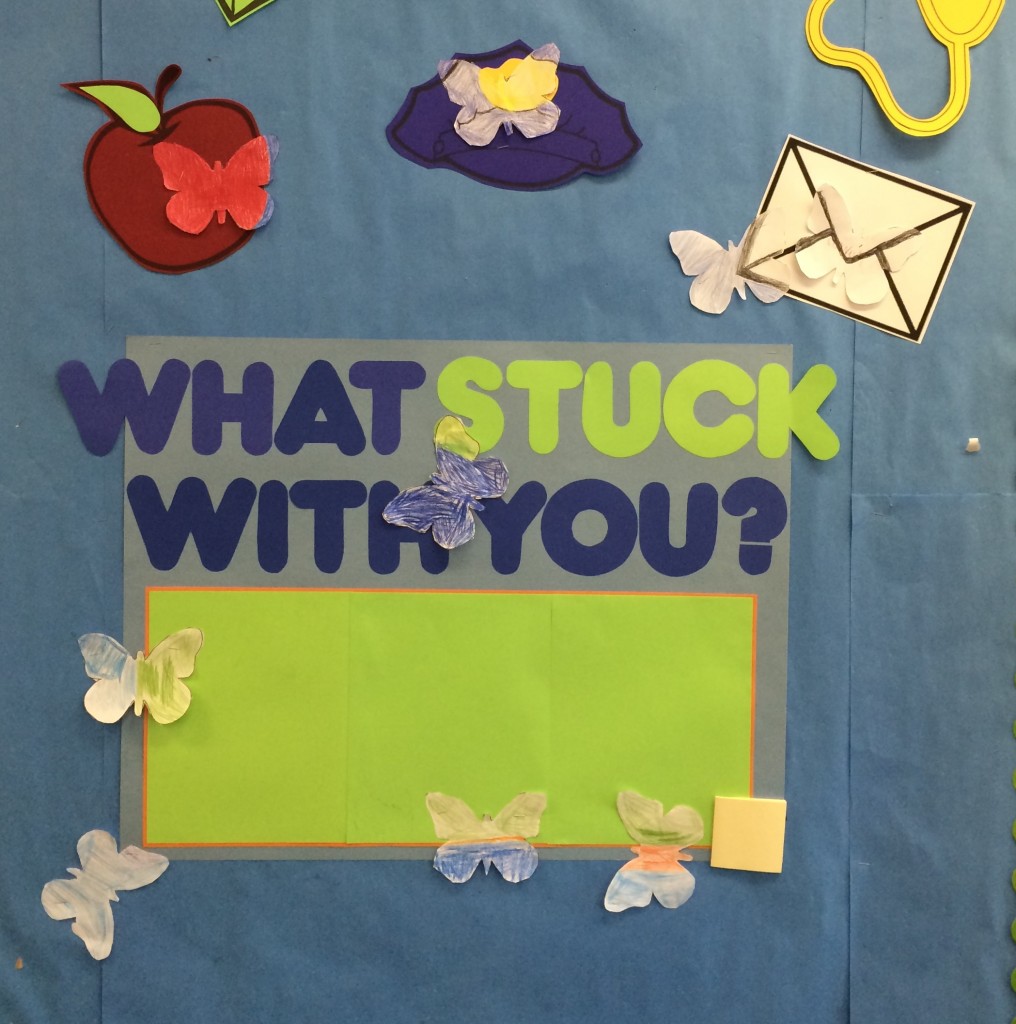Camouflaged Butterflies
Posted by kelseyvass in Art, Science
During our Canadian Animals unit, students became fascinated with how predators and prey use camouflage for protection. To demonstrate the idea of camouflage, I facilitated an embodied activity. On a piece of yellow paper, I placed several coloured toothpicks. I then asked student volunteers, one at a time, to pretend to be birds and pick up the first worm they saw. Once students all had a toothpick, we sorted them based on colour. Students immediately recognized how they were more likely to pick up toothpicks that did not match the background colour and made inferences to explain why there were more of some colours than others.

Following this activity, students applied what they learned in an art activity. I challenged students to create a butterfly that camouflaged with the walls of our class. Students thoroughly enjoyed the opportunity to draw in new areas of the classroom. After they completed their butterflies, I asked half of the students put their heads down on their desks. The remaining students taped their butterflies onto the walls for their peers to find.

Overall, this cross-curricular inquiry into camouflage proved to be a memorable learning experience for many students in my class. They were excited to show visitors their creations and used this lesson to guide their research projects on animals of their choice – many students left curious about if and how their selected animal used camouflage!

That butterfly hidden in the envelop is CLEVER